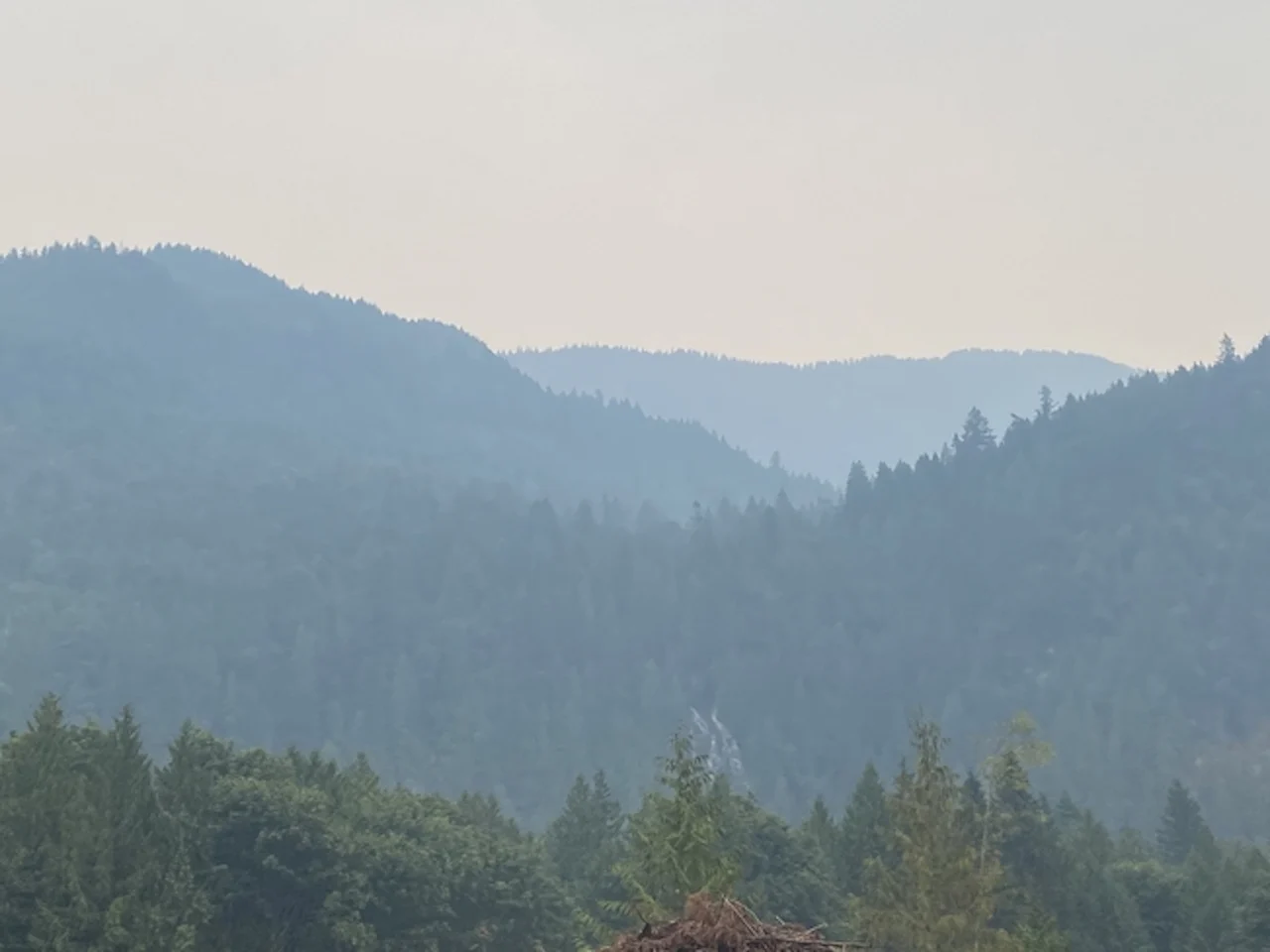
Air quality poor across B.C., incoming showers will skip wildfire zones
Hazardous air quality issues remain in parts of British Columbia this week as wildfire smoke from hundreds of fires blankets many communities.
Smoke from the prodigious wildfires burning in the B.C. Interior and in neighbouring Washington are continuing to degrade air quality across B.C., along with contributing to hazy skies over much of the West. And though there is indeed a bit of rain in the forecast, most of it is set to fall far away from the areas where wildfires are most virulent.
While the situation is significantly better than last week, when B.C. saw the worst air quality on the planet, poor air quality will still be a problem Wednesday in the vicinity of fires and in areas where the winds carry heavy smoke down to the surface. Even areas near the coast have seen air quality fall slightly from Tuesday.
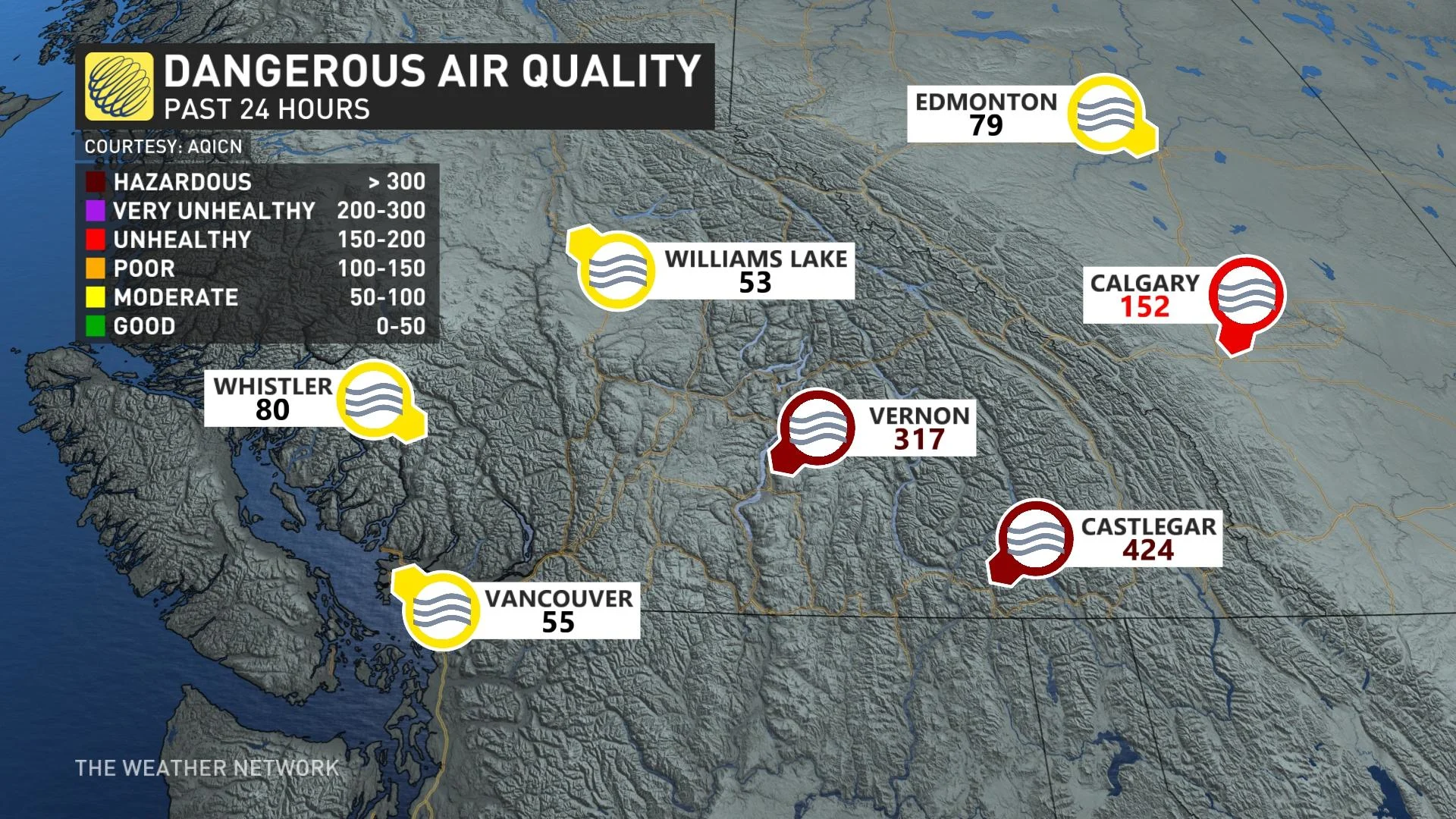
The B.C. government reported 266 active fires in the province as of Wednesday morning, the majority of which are in southern sections. That includes 25 that started just in the past two days.
A little more than two-thirds of the active fires have been ignited by dry lightning, according to provincial statistics. This weekend’s blazes pushed B.C.’s total fire count above 1,300 for the year, currently sitting at 1,341, around 62 more than this time last week.
Onshore winds forecast for Wednesday may begin to clear the smoke, so smoke concentrations may vary widely across the region as the wind direction and temperatures change, and wildfire behaviour is modified.
The latest air quality outlook for Cariboo and the Okanagan has both regions remaining in the “good” category through next Saturday. Vancouver could see moderate air quality on Thursday due to the smoke getting stuck in the Fraser Valley.
As for much-needed precipitation, there's mixed news. Looking ahead, a burst of moisture heading down the province's coast looks set to bring showers to end off the week, leading into Saturday. Places across the South Coast as well can expect some rain – not a deluge by any means, but enough to help clear the air a bit.
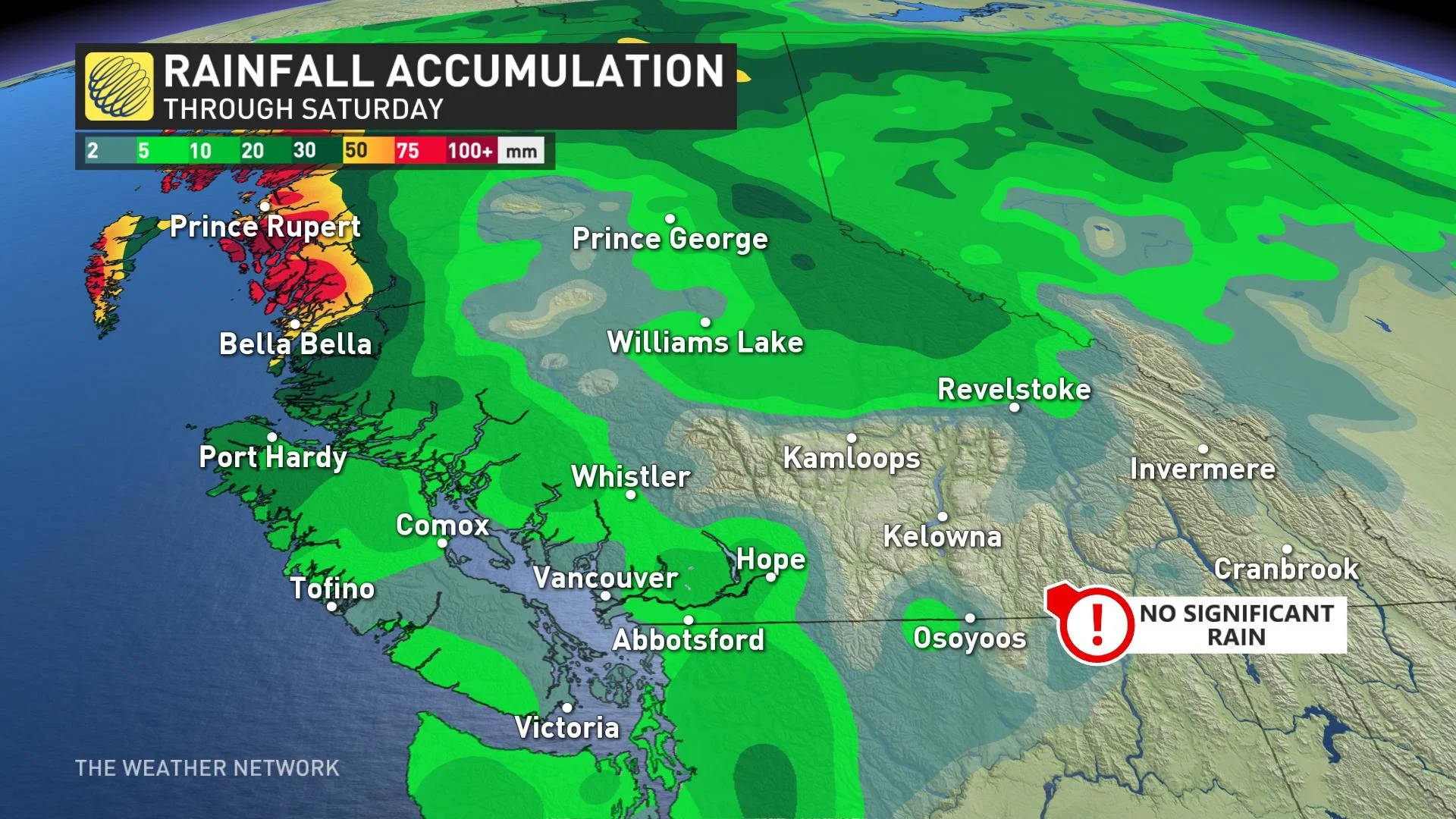
The downside is that that moisture is not expected to reach the southern Interior in any meaningful way, robbing the region of moisture when firefighters need it most.
In the mean time, special air quality statements are still in place for much of the Interior B.C. as close to the coast as Whistler. The worst conditions will be found adjacent to the ongoing wildfires, as extremely poor air quality will be dangerous for surrounding communities.
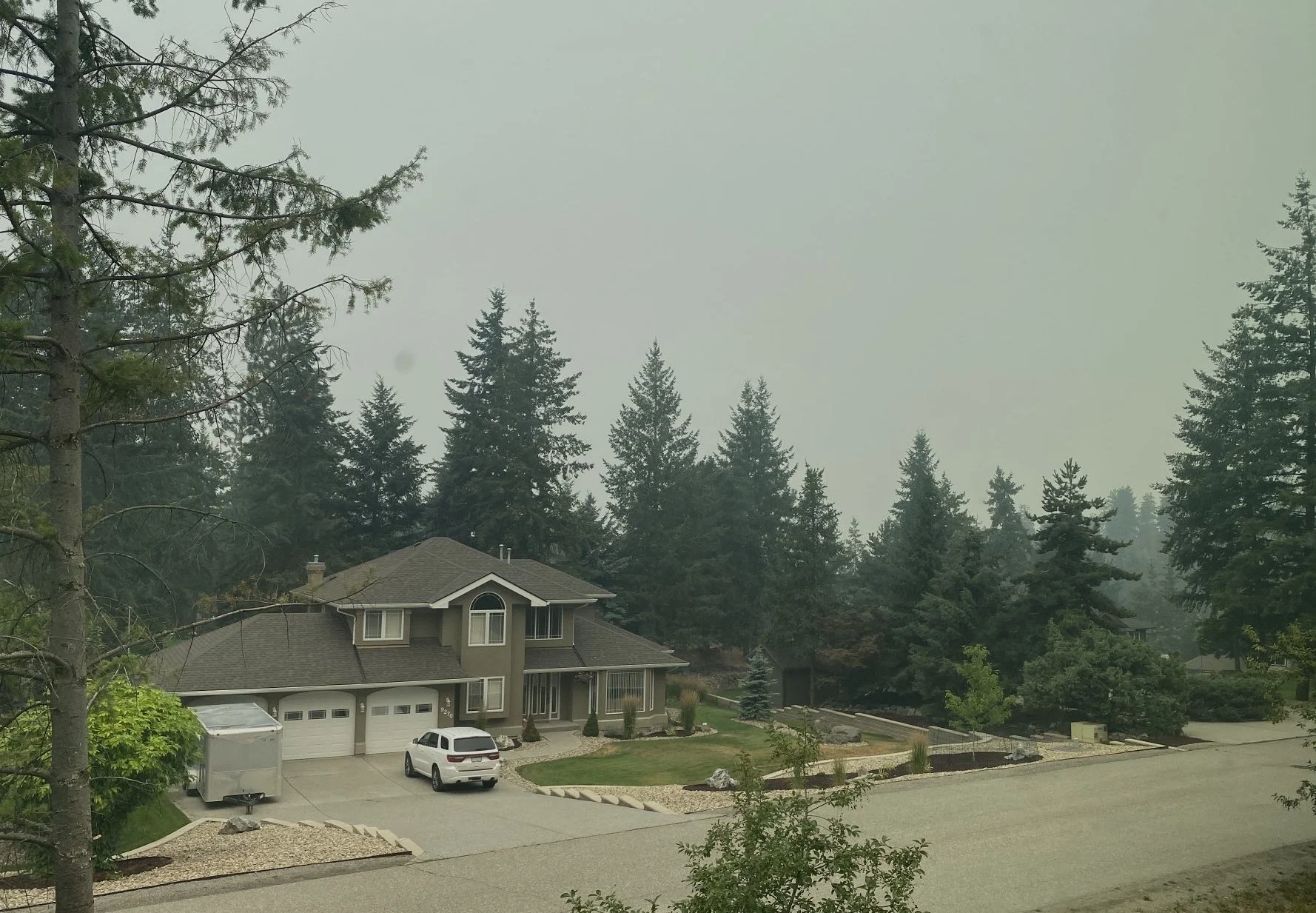
Wildfire smoke blocking out the sunlight in the Okanagan Valley. (Jaclyn Whittal)
A noteworthy statistic is that the Calgary International Airport in Alberta has endured more than 330 hours of wildfire smoke in 2021, the second-highest in the city’s history.
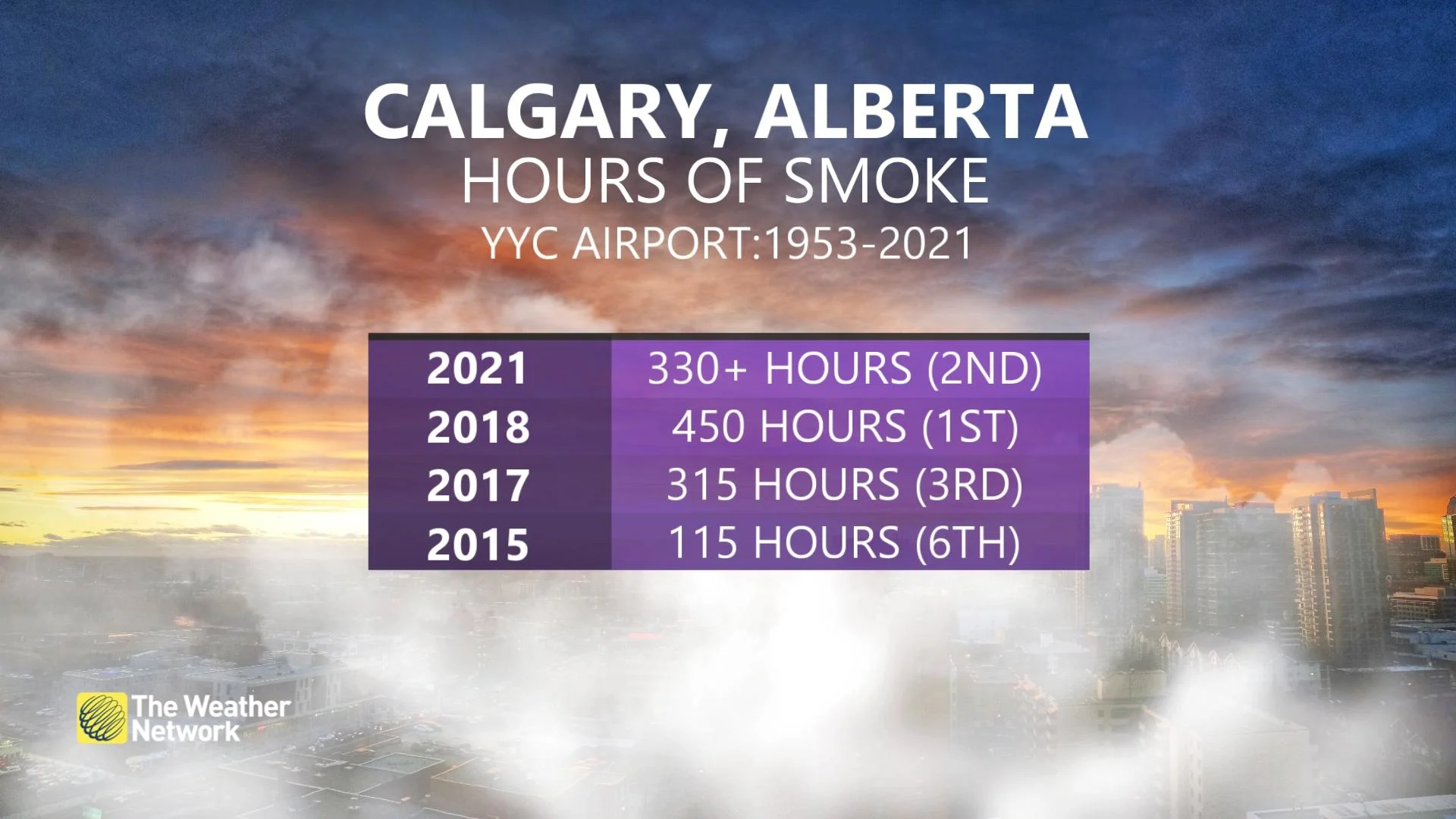
Some of the most dangerous components in wildfire smoke are carbon monoxide and microscopic, ultrafine particles called PM 2.5, which are 2.5 microns in diameter or smaller and cause health complications when they enter the lungs or bloodstream.
“Individuals may experience symptoms such as increased coughing, throat irritation, headaches or shortness of breath. Children, seniors, and those with cardiovascular or lung disease, such as asthma, are especially at risk. If your home is not air-conditioned, be sure the house doesn't get too warm when doors and windows are closed to keep out smoke,” Environment Canada states.
FLIGHTS CANCELLED IN KELOWNA, BUT AIR QUALITY SHOULD IMPROVE THIS WEEK
Thumbnail courtesy of Ashley Mah, taken in Chilliwack, B.C.
Check back for the latest on the wildfires across British Columbia.
